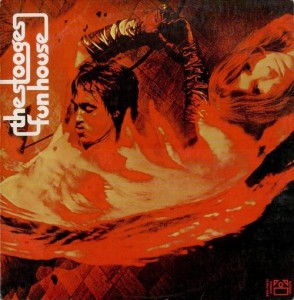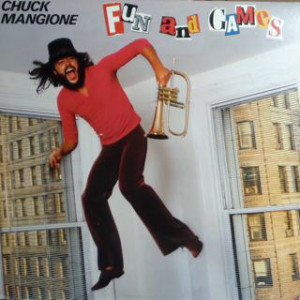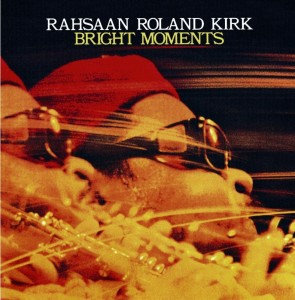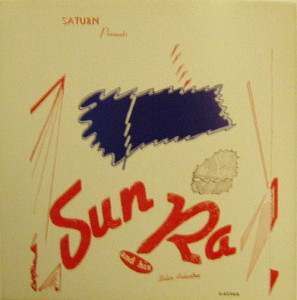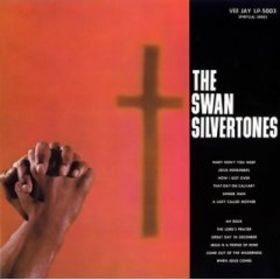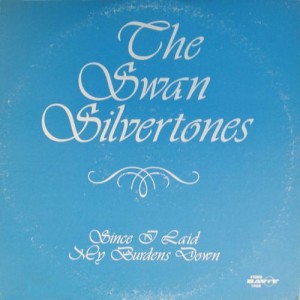Link to an excerpt from the book A War for the Soul of America: A History of the Culture Wars (2015) by Andrew Hartman:
NOVA – The Great Math Mystery
NOVA: The Great Math Mystery (April 2015)
PBS
Director: Dan McCabe and Richard Reisz
“The Great Math Mystery,” an episode of the long-running PBS science show Nova, is in essence an analysis of mathematics and analytic philosophy. In the program, about 99% of the show consists of people from the analytic philosophical school talking about math, plus one token representative from the Continental Philosophy school (Stephen Wolfram) and a few comments by analytic philosophy people about the Continental Philosophy view. What this show desperately needed was a dose of the “fairness doctrine” by giving something closer to 50% of the airtime to the Continental view. Ideally, Alain Badiou would have been featured, because he is perhaps the most well-known living philosopher to argue about the nature of mathematics from outside the caste of “working mathematicians”. Count this episode among the many that PBS airs that is a polemic disguised as an even-handed treatment.
The Stooges – Fun House
The Stooges – Fun House Elektra EKS 74071 (1970)
This album kicks you where it hurts and begs you to like it.
The songs speak for themselves. “Down on the street,” with its bluesy bass vamp, is one of the best album openers you can find. Titles like “loose,” “t.v. eye” (twat vibe eye), and “dirt” are not songs for your mother. The album progressively cuts loose as side two ends. “1970,” a reprise of “1969” from their first album, shows dramatic changes in one year’s time. Steven Mackay comes in on sax, with solos outside almost anything previously heard in rock.
While none of these songs have radio appeal, most stretching out for four to seven minutes, this is one of those rare perfect albums. It seems to capture the craziness of a Stooges show. If you aren’t provoked, shocked, or insulted you must be in a coma. This music represents a side of America most people choose to ignore or refuse to acknowledge. The nihilistic lyrics succinctly codify urban disillusionment circa 1970.
Fun House is intuitive music, not some academic experiment. The sound is untouched. Ron and Scott Asheton bash out scathing but fluid noise on their instruments. Iggy Pop’s vocals ooze through the murk, often bursting into powerful screams. Almost like a trance, the Stooges smash ahead without regard for technique or tradition.
Despite being the most powerful and trashy album ever made, Fun House holds up well next to Ornette Coleman or John Coltrane. Iggy Pop had a jazz ideal in mind without knowing how his band would get there. In a way, the Stooges’ nominal lack of technical prowess allowed them to do what hindered even some jazz greats. Don’t assume lack of skill lessens incredible talent, because technical skill is irrelevant to the musical statement. On that point, many of the same riffs repeat throughout the album. All rock and roll repeats the same riff structures anyway. The Stooges simply use an honest approach that makes no excuses. 1970: The Complete Fun House Sessions later proved that the Stooges refined the songs from a loose live set, to a concentrated statement of their identity.
Recorded on a visit to Los Angeles, Fun House was the Stooges’ last chance to record something that would sell. The title, Fun House, comes from the old Ann Arbor frat house the MC5 and Stooges used as a commune for rock and roll freaks. The record, of course, did not generate sales and the band broke up (luckily, the Stooges re-formed to later record Raw Power). Producer Don Gallucci deserves credit for not leaving any signs he worked on this album. Only the band’s raw energy comes through. Any overdubs are brilliantly concealed, creating an energetic and totally improvised feeling. In contrast, the Stooges’ great debut album, produced by John Cale of The Velvet Underground, sounds at times more like a collaboration with Cale than a pure Stooges effort.
Fun House is trash achieved. It plays like a soundtrack to high school shop class. Young punks who cruise main streets each night, all over the country, have this music in mind if not on their stereo. All three Stooges albums are classics, but this rises to the top as the purest documentation of their existence. It is simultaneously a raw statement of sex/drugs/rock’n’roll and a fluid masterpiece of experimentation. Like it or not, this is one kind of American culture at its finest.
Chuck Mangione – Fun and Games
Chuck Mangione – Fun and Games A&M SP-3715 (1980)
I remember that my mother had a copy of this and she suggested my brother and I listen to it as kids because it looked “fun” with the guy jumping on the cover. We hated it.
FBI Informant Exposes Sting Operation Targeting Innocent Americans
Link to a news segment entitled:
“FBI Informant Exposes Sting Operation Targeting Innocent Americans in New ‘(T)ERROR’ Documentary”
Rahsaan Roland Kirk – Bright Moments
Rahsaan Roland Kirk – Bright Moments Atlantic SD 2-907 (1974)
Rahsaan makes goofing off a profound experience. If only people spent more time doing just that, maybe there would be more bright moments and less fabricated problems in this world. Such is the shoot-from-the-hip philosophy Rahsaan promotes.
His style was a little Afro-centric, but that sells him short. Rahsaan made humane music. Everyone is involved. Here, there is plenty of opportunity for the audience to holler, testify, and clap along with every song and interlude. It isn’t just Rahsaan who makes Bright Moments what it is. Unlike his studio masterpieces Rip, Rig & Panic and The Inflated Tear, Kirk’s band here is not made of big-name superstars. It doesn’t take a band from the short list of jazz masters to make a great album.
Bright Moments is a fantastic example of the power of live recordings. Great live albums should make it a trivial fact that you aren’t actually at the concert as you listen. It is vaudevillian, and makes the effort to craft the performance into one tailored just for the audience. With the right set of ears it’s obvious Rahsaan is spinning his craft just for you.
Rahsaan certainly brought his bag of tricks at this date. He played three saxophones at once. He played a flute with his nose. These aren’t gimmicks. Kirk was talented enough to make sounds these unusual ways, but also to do a little more. “Fly Town Nose Blues” has him playing the flute with his nose with vibrato! When he plays multiple saxophones, there are certain logistical difficulties — three instruments and two hands. Kirk could deftly make the drone an integral part of some complex solos.
Few people could accuse their audience of not knowing everything about John Coltrane “and the beautiful ballad he wrote called ‘After the Rain’” and turn the accusation into a peace offering. Rahsaan was the people’s sax man. That isn’t any big secret, because in so many words he certainly lets you know.
Yeah, it takes a little something to blow such ragged solos. Rahsaan let all the breathy, clipped, muffled noise coming from his saxophones have their moments in the lights, hanging there as invisible sound sculptures.
At some point the criticism that jazz became academic gained supporters. It’s not that Rahsaan went out of his way to dispel that myth, but he did dispel it. Rahsaan Roland Kirk is like good whiskey. There are supporters, but the rest — even those finding it hard to swallow — can be easy converts.
Sun Ra – Cosmic Tones for Mental Therapy
Sun Ra and His Solar Arkestra – Cosmic Tones for Mental Therapy El Saturn LP 408 (1967)
One of the more difficult Sun Ra albums, but a great one too. It was recorded in 1963. Like some of the other recordings from the early 1960s in New York this features vaguely psychedelic reverb effects. These recordings are the most effective of Sun Ra’s experiments of the era. The reed players are stretching (“Voice of Space”) and laying the foundation for what they would do after the October Revolution in Jazz the following year. While the band had experimented with dissonant, spacey sounds for years, they use those techniques for longer, sustained stretches on many of these songs. The polyrhythmic percussion finds new life here by bridging the newer recording effects and soloing with sci-fi exotica stylings the band had used for years. That is to say that this actually marks a break from the merely superficially “exotic” approach of the prior years, giving way to something a lot less bound to conventional swing and bop structures and more able to float about purely on moods and washes of sound. If this doesn’t sink in right away, give it time.
[Historical note: This music was recorded in New York City in the early 1960s, but was inspired by a performance at the Edward Hines, Jr. VA Hospital in Chicago on February 28, 1957, at which a (formerly) catatonic woman who supposedly hadn’t spoken in years exclaimed at the end of the performance, “You call that music?!”]
Frances Fox Piven on Syriza and Greece’s Prospects for Fighting Austerity
Link to an interview by Alexandros Orphanides:
“Frances Fox Piven on Syriza and Greece’s Prospects for Fighting Austerity”
The Swan Silvertones – The Swan Silvertones
The Swan Silvertones – The Swan Silvertones Vee-Jay LP 5003 (1959)
The Swan Silvertones had been around for over two decades before they released their first album of new material. Their previous new recordings had been released as singles, first for King Records and then Specialty. In the late 1950s, they switched to Vee-Jay Records, the label that released The Swan Silvertones.
The group’s first full-length album marked a new approach for the group. Having already developed their own style by the end of their tenure at King and perfected their musical ideas at Specialty, they transitioned to a phase where they were now expanding upon the elements of their music that were already in place. The Swan Silvertones really set the tone for all the albums the group would release through the 1960s, with an increased use of instrumental accompaniment and more ornate arrangements. Often the use of instrumental accompanists went hand in hand with allowing more layers in the song arrangements. There was also a more liberal use of space. These trends combined to give everything a softer edge than the “hard gospel” recorded for Specialty. The LP format also allowed them to record a lot of slower songs to break up the more familiar up-tempo numbers in the album sequencing. This works well, and the group would only improve on those kinds of subtleties of the album format on subsequent releases.
Songs like “Mary Don’t You Weep” and “Jesus Remembers” demonstrate the full power of what The Swans were capable of in their Vee-Jay era. Elsewhere on the album particularly in the middle, the results aren’t quite as exciting. Some songs with a rather conventional doo-wop feel tend to come across as filler. And at times the arrangements, as on the version of “How I Got Over” included here, feel a bit forced and claustrophobic. The group’s ambitions seem to get ahead of themselves in piling too much into a single song. This isn’t a condemnation of the album though. In fact, there really isn’t a bad track here.
As a bit of trivia, note that some of the lyrics sung by Claude Jeter or possibly Paul Owens (“I’ll be your bridge over deep water if you trust in my name”) from the opener “Mary Don’t You Weep” inspired Paul Simon to write “Bridge Over Troubled Water”. Jeter later was a guest vocalist on one of Simon’s solo albums.
The Swan Silvertones – Since I Laid My Burdens Down
The Swan Silvertones – Since I Laid My Burdens Down Savoy MG 14468 (1978)
There a number of observations I can make about The Swan Silvertones’ material for the Savoy label from the late 1970s and early 1980s. The group was in its autumn years, and this was most evident in the song arrangements. Once a hallmark that placed the group above their peers, in the Savoy years the song arrangements tended to be more utilitarian. The backing vocals use rather boilerplate harmonies that add almost no rhythmic embellishment. This makes the backing vocals sound almost the same for every song, and the points of interest are almost never the backing vocals. Louis Johnson was the only recognizable member from the group’s heyday, and he handled essentially all of the lead vocal duties. That isn’t to say the songs are always dull. They tend to be mellow, but are often heartfelt enough to be enjoyable. The instrumental accompaniment is generally quite respectable, and often is the factor that makes certain songs stand out. The instrumental performances may not innovate, but are skillful enough to match a typical 1970s soul outfit. The last point I will make about the Swan Silvertones’ Savoy albums is that they tend to be quite short, typically including only eight rather compact songs — this particular album tops out at just over 25 minutes of music. About half the material is also usually filler.
Regarding this album in particular, it probably falls somewhere between At the Cross and Day By Day in both style and quality. Side one might be a little stronger than side two. But the filler tends toward the tedious more often than not. The new version of “Mary Don’t You Weep” here pales in comparison to the group’s classic version from the late 1950s, instead being vaguely comparable to the earlier re-make on Only Believe. The bass line on “Trying to Reach Perfection” is lifted straight from “Chameleon” on Herbie Hancock‘s Head Hunters. Still, the smooth and mellow “The Lord Will Make a Way” and “It’s Hell” are among the group’s best recordings of the late 70s, those and “Lord I Thank You” being probably the only reasons for fans to bother with the album.

